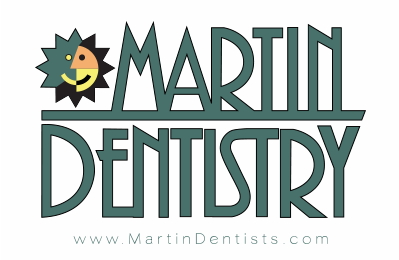Concerns with radiation and exposure:
When it comes to taking dental images, commonly called xrays or radiographs, there can be concerns and misconceptions. People can be concerned (and should be) about the amount of radiation they receive. The type of radiation used in generating our images falls within the electromagnetic spectrum. Radio waves are low energy and gamma rays are higher energy and can cause you to Hulk-out (only in the comics). In dentistry we use x-rays.

At Martin Dentistry we utilize digital xrays to minimize the amount of exposure received. Regular film xrays can require more than twice the exposure of digital images. When it comes to our images, we adhere to the ALARA principal (As Low As Reasonably Achievable). Meaning we seek to use the minimum amount of exposure to generate our images. Fortunately, in dentistry the exposure we need to generate images is relatively very small and factors very little into our overall exposure.
The good thing about radiation is that it can be easily measured and compared. When comparisons are made the doses are thought of in terms of Sieverts. The Sievert is a derived unit of ionizing radiation dose in the International System of Units and is a measure of the health effect of low levels of ionizing radiation on the human body. A millisievert is 1/1000 of a Sievert (there are 1000 millisieverts to a Sievert). In dentistry we talk of exposure in terms of microsieverts. A microsievert is 1/1000 of a millisievert (there are 1000 micorsieverts to a millisievert and 1,000,000 micorsieverts to a Sievert)
Ok, that was a lot of terms and math. What does exposure from dental images relate to?
For example, compare 4-bitewing images and a panograph (pano). These are typical examples of images we generate to check for decay, bone levels, infection and tooth position.

The pano shown is about 16 microsieverts and the 4 bitewings are about 20 microsieverts
For comparison in micorsieverts:
Pano = 16
4-Bitewings = 20
Eating 5 bananas a month for a year = 6
Normal daily background exposure for just living on Earth = 10
Flying roundtrip for the Florida vacation from the Midwest = 40 (No one cancels a trip to Florida because of radiation concerns – we are not even factoring in lying in the sun at the beach)
A mammogram to help detect cancer = 400 (That is 25 panos and NO human should ever need 25 panos in their entire lifetime!)
Spinal xray = 1500
Head CT = 2000 (that’s enough for 100 years’ worth of bitewings)
Radon gas basement exposure yearly = 2280
Occupational limits = 50,000 (from the US Nuclear Regulatory commission) this is the dose that is allowed yearly for workers. That is 2500 sets of 4-bitewings…..in a year.
What about lead shielding (lead aprons)?
According to the recommendations of a joint FDA and ADA study, full lead apron use is not routinely necessary and the exposure to the abdominal area is negligible. There is very little scatter radiation generated when taking our images. If all the recommendations for limiting radiation exposure are put into practice, the gonadal radiation dose will not be significantly affected by use of abdominal shielding*. What that is saying is, when we follow our normal protocol for taking images that there is no meaningful difference between using a lead apron and not using a lead apron. Our office will use thyroid collars when applicable.
At Martin Dentistry our main concern is our patients’ health and safety. The above examples are intended to show how effective and safe the levels of exposure are that patients receive in a digital office. When you have concerns over radiation exposure at the dental office, hopefully the above examples can give you piece of mind. The benefits of current and complete images far outweigh any risks associated with exposure. With current images we can diagnose and treat before more involved or lengthy procedures are needed. Even as safe as they are, we will adhere to the ALARA principals to limit any exposure. If you have any further concerns or need information, please let us know.
Sincerely,
Matthew Martin, DDS
*National Council for Radiation Protection & Measurements, ed. NCRP Report No. 145 - Radiation Protection in Dentistry. Bethesda: National Council on Radiation Protection and Measurement; 2003.
